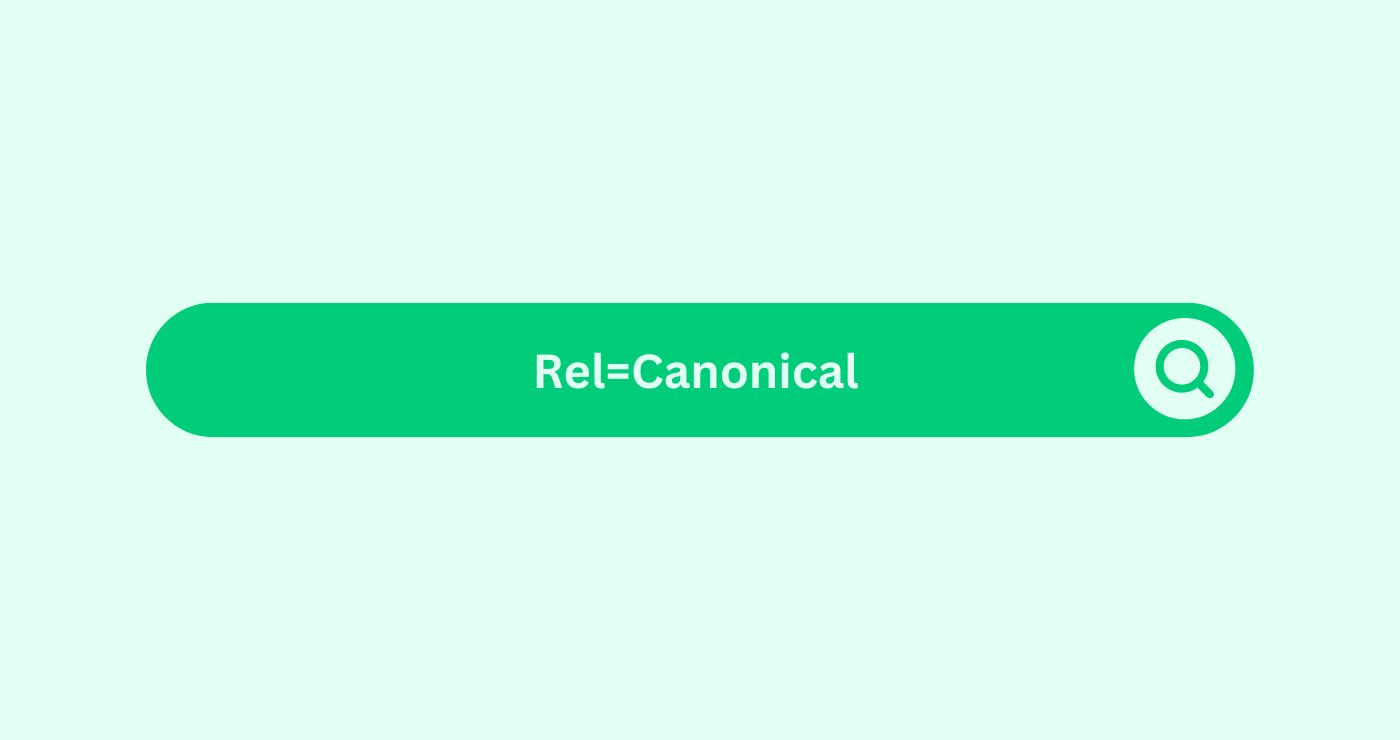Definition
Rel=canonical is an HTML attribute used in the context of SEO (Search Engine Optimization) to indicate the preferred version of a web page when multiple versions of the same content exist. It is employed to address duplicate contentDefinition Duplicate content in the SEO space refers to iden... More issues and consolidate the SEO value of similar or identical web pages into a single authoritative URL. By specifying a canonical URLWhat is a Canonical URL in the context of SEO? Canonical URL... More, website owners signal to search engines which version of a page should be indexed and displayed in search results, thereby avoiding potential penalties for duplicate contentDefinition Duplicate content in the SEO space refers to iden... More and ensuring proper attribution of ranking signals.
How you can use Rel=canonical?
One common use case for Rel=canonical is when a website offers variations of the same product or content accessible through different URLs. For example, consider an e-commerce website that sells a particular product available in multiple colors, each with its own unique URL. To prevent search engines from indexingWhat is Indexing? Indexing in the context of SEO refers to t... More and ranking each color variant as separate pages, the website can implement Rel=canonical tags on all color variations, specifying the canonical URLWhat is a Canonical URL in the context of SEO? Canonical URL... More of the main product page. This consolidates the SEO value of all color variants into a single authoritative page, preventing dilution of search rankings and ensuring a better user experience.
Formula or Calculation
Rel=canonical does not involve a specific formula or calculation but rather requires the inclusion of a canonical link element within the HTML code of a web page. The canonical URLWhat is a Canonical URL in the context of SEO? Canonical URL... More specified in the rel=canonical tag indicates the preferred version of the content for search engines. The implementation of Rel=canonical involves adding the following HTML tag within the <head> section of the webpage:
html Copy code<link rel="canonical" href="https://example.com/canonical-page">
This tag informs search engines that the specified URL is the canonical (preferred) version of the content.
Key Takeaways
- Use Rel=canonical to specify the preferred URL for content with multiple versions or variations.
- Implement Rel=canonical tags consistently across duplicate or similar pages to consolidate SEO authority.
- Ensure that the canonical URLWhat is a Canonical URL in the context of SEO? Canonical URL... More accurately represents the primary version of the content and is accessible to search engine crawlersDefinition Crawlers, also known as spiders or bots, are auto... More.
- Regularly monitor canonicalization issues using tools like Google Search ConsoleDefinition Google Search Console is a free web service from ... More to identify and address any discrepancies.
- Exercise caution when using Rel=canonical and avoid improper implementation, as it can impact search engine indexingWhat is Indexing? Indexing in the context of SEO refers to t... More and rankings.
FAQs
What is the purpose of Rel=canonical in SEO?
Rel=canonical is used to specify the preferred version of a web page when duplicate or similar content exists, consolidating SEO value and preventing duplicate contentDefinition Duplicate content in the SEO space refers to iden... More issues.
How does Rel=canonical differ from 301 redirects?
Rel=canonical is a directive within the HTML code of a webpage that signals the preferred URL to search engines, while a 301 redirect physically redirectsDefinition Redirects in the SEO space refer to HTTP status c... More users and search engine crawlersDefinition Crawlers, also known as spiders or bots, are auto... More from one URL to another.
Can Rel=canonical be used across different domains?
No, Rel=canonical should only be used within the same domain to indicate the preferred URL for content variations on that domain.
What happens if multiple pages specify different canonical URLs?
Search engines may choose to honor one canonical URLWhat is a Canonical URL in the context of SEO? Canonical URL... More over others or may ignore conflicting canonical directives altogether, potentially leading to indexingWhat is Indexing? Indexing in the context of SEO refers to t... More and ranking issues.
Should canonical URLs include parameters or tracking tags?
Canonical URLs should generally be clean and devoid of unnecessary parameters or tracking tags to ensure accurate canonicalization and prevent confusion.
Can Rel=canonical be used for non-HTML content, such as PDF files or images?
Yes, Rel=canonical can be implemented for various types of content, including PDF files, images, and other non-HTML formatsDefinition In the SEO space, "formats" refer to the various ... More, to specify the preferred URL for indexingWhat is Indexing? Indexing in the context of SEO refers to t... More purposes.
How often should Rel=canonical tags be reviewed and updated?
Rel=canonical tags should be reviewed regularly, especially after website updates or content changes, to ensure they accurately reflect the preferred version of the content.
Can Rel=canonical help with pagination issues on a website?
Yes, Rel=canonical can be used to consolidate pagination pages into a single preferred URL, helping to prevent duplicate contentDefinition Duplicate content in the SEO space refers to iden... More and maintain SEO authority.
Is it necessary to include a self-referencing canonical tag on every webpage?
While it's generally recommended to include a self-referencing canonical tag on each webpage, especially for dynamically generated content, it may not be necessary for static pages or pages with unique content.
How can I verify if Rel=canonical tags are correctly implemented?
You can verify Rel=canonical implementation using browserDefinition A browser is a software application used to acces... More developer tools, SEO crawlingWhat is crawling in the context of SEO? Crawling is the proc... More tools, or Google's URL Inspection tool in Google Search ConsoleDefinition Google Search Console is a free web service from ... More to ensure that canonical URLs are being interpreted correctly by search engines.




